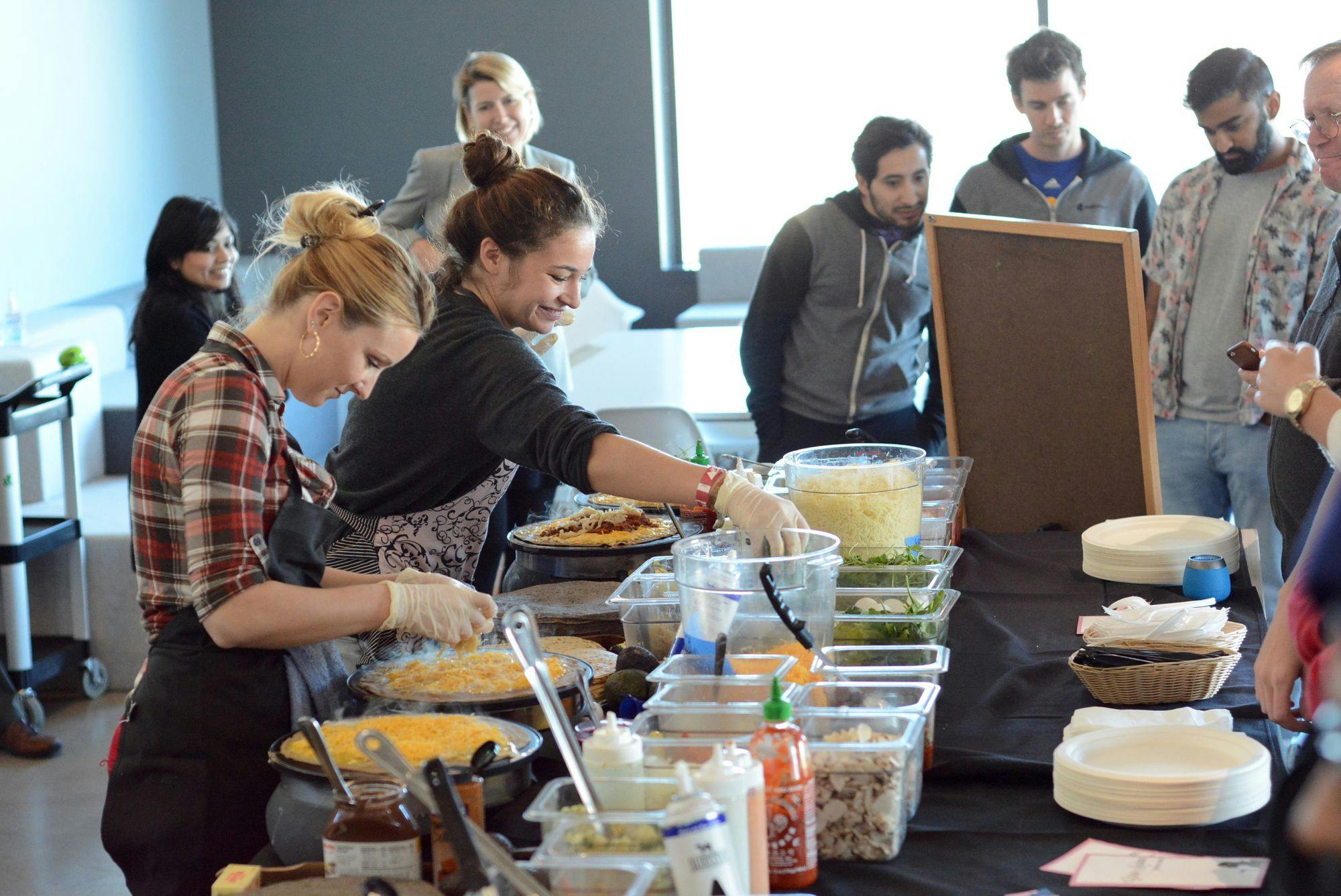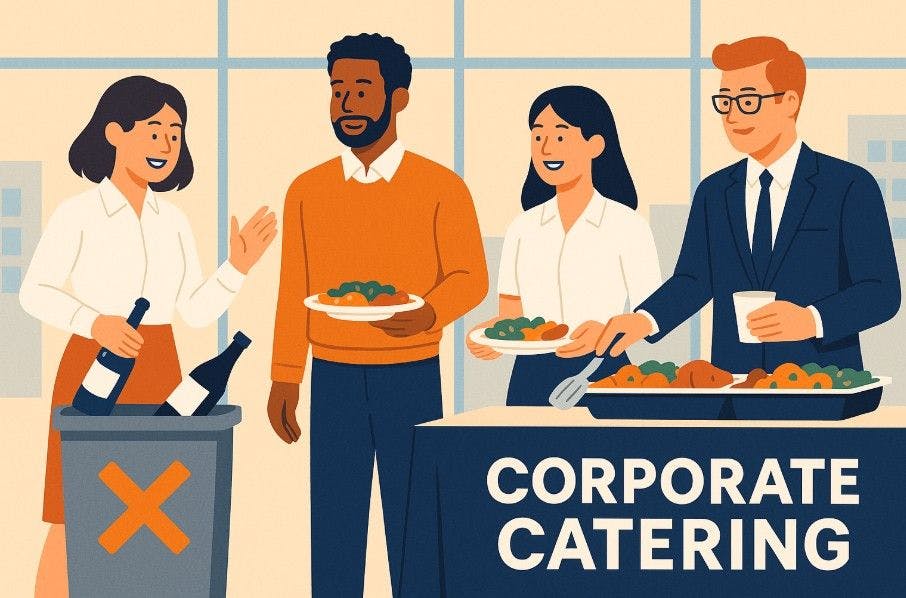
As offices plan end-of-year celebrations, our new survey suggests employees would rather skip the champagne and get a sandwich instead.
According to CaterCow’s 2025 Workplace Food Habits Report, a majority of workers (53%) say their company now caters lunch at least once per week—a clear sign that food has become the new centerpiece of return-to-office culture.
But the real story comes when you look at those who already have regular catering: among this group, 39% would give up their annual holiday party for free catered lunch every workday, while 38% would trade away company happy hours and 30% would forgo their gym or wellness stipend.
Even core benefits aren’t off-limits. Nearly one in five of these employees said they’d sacrifice medical insurance for guaranteed daily lunch at work.
Food Beats Alcohol, Five to One
When asked what actually convinces employees to come into the office, food outperformed after-work drinks by 5x. Ten percent said catered lunch is what gets them in the door, compared to just two percent who cited alcohol.
It’s a striking shift in workplace culture: free lunch has replaced free booze as the primary social glue.
“Shared lunches spark camaraderie, strengthen morale, and open the door to cross-team conversations that might not happen otherwise. They create space for new friendships and genuine office connections to form naturally,” notes Workplace Experience Manager at Invisible Technologies, Jaime Caban. Caban helped instrument an office lunch program in New York City.
More importantly, Caban adds, corporate catering programs “bring people together” and unlike a booze-filled ‘welcome to the team’ happy hour, “for new employees, joining a lunch table can be one of the easiest and most welcoming ways to meet colleagues.”
Caban’s experience and CaterCow’s data align with wider research. A 2022 national Lunch Report found that 44% of employees rank free lunch among their top two workplace perks, ahead of weekly happy hours or transportation reimbursement.

A Missed Opportunity for Healthier Habits
If food is what drives attendance, it’s also where companies can make the biggest impact on employee wellness.
When asked what would most embarrass them if their eating habits at work were monitored, the top response was “how much junk food I consume,” followed by “how much soda I drink instead of water.”
That’s an opportunity, not a problem—especially for companies designing healthier catered menus.
Recent studies confirm that structured workplace food programs can reshape nutrition and well-being. Research published in the Journal of Occupational and Environmental Medicine found that access to healthy, communal food options improved dietary quality and morale, while a University of South Florida study reported that food-related benefits had stronger effects on engagement than health or mindfulness perks.
“Our team values rotating menus and a wide variety of options, which keeps everyone engaged and excited for lunch each day,” says Emin Efendy, People Operations and Talent Manager at Aquabyte in San Francisco. “This consistency has not only enhanced our employee experience, but also significantly eased the workload for our office coordinators.”
What It Means for Employers
As hybrid routines settle and companies plan 2026 budgets, the message is clear:
- Weekly catering has become a majority norm. Over half of workplaces now provide it.
- Daily food beats one-off perks for engagement. Employees will trade happy hours, gyms, and even insurance for it.
- Healthy menus can turn attendance into wellness. Companies can nudge better habits simply by improving what’s on the plate.
In an era when costly off-sites and lavish parties are losing relevance, corporate catering is proving to be the quiet powerhouse of workplace culture—predictable, inclusive, and grounded in everyday connection.
For employers still debating whether to spend on a holiday bash or a weekly food program, CaterCow’s data suggests the choice is simple: feed your team year-round, not just once a year.

Source: CaterCow 2025 Workplace Food Habits Report, supplemented by external research from The Lunch Report, the Journal of Occupational and Environmental Medicine, and University of South Florida
Order Lunch Catering on CaterCow:




